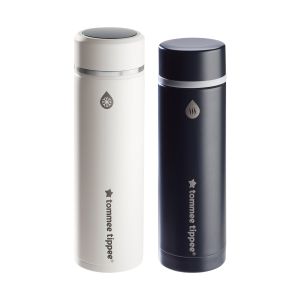
This is a demo store. No orders will be fulfilled.
Subscription orders can be cancelled at anytime. Free delivery on all subsequent subscription orders. Find out more about subscriptions.
They’re easy and fuss free
Your products are automatically sent to you
You save up to 10% when you sign up for a subscription
You can cancel at any time
The truth is new parents often have lots of questions about latching on while breastfeeding!
A good latch is a key part of making sure that you're comfortable while feeding and that your baby feeds properly. So, let���s run through what latching on means, cover how to achieve a comfortable breastfeeding latch, and discover how you can encourage your baby to latch deeper.
Latching on is the process of getting your little one to suckle around your nipple and areola so they can breastfeed. Think of your areola as a target for your baby���s mouth and try to get them right in the bullseye! They should press against this target to trigger the milk flow and establish a strong milk supply.
If your baby is latched on properly, breastfeeding shouldn���t cause you discomfort, and your nipples won't become cracked or painful.
Getting the hang of a good breastfeeding latch that���s comfortable for you both can be a little tricky at first. It can take time and perseverance to get it all going smoothly!
Don���t stress and let us talk you through how to get a good latch:
There are some signs to look out for that will let you know if your baby is latched on properly:
Getting a good breastfeeding latch can be difficult if you've got bigger boobs, but it should become easier with time. But if you���re finding it hard, try giving these breastfeeding latch tricks a try:
If these tips don���t help and you're still struggling to achieve a good latch or are concerned that your baby may be tongue-tied, consult your doctor or health visitor for advice.
A deep latch can be achieved with any breastfeeding position. But it may help if you sit up straight, use pillows for support, and use the deep latch technique to prevent sore nipples and help your baby feed more easily.
Here���s a step-by-step guide to the deep latch technique:
If you think your baby isn���t latched correctly or if your nipple hurts when they're nursing, you can slide your finger into their mouth while they���re feeding to break the hold they have on your nipple. You can then try again and alter your position to achieve a better latch that���s more comfortable.
Don���t forget, it���s not supposed to be painful. You and your baby should be comfortable, and you should be able to see your little one sucking, swallowing, and breathing.
If you���re struggling at all, don't be afraid to ask for help. You can get in touch with your midwife or a lactation specialist. They'll be able to help you out with any breastfeeding-related issues.
A shallow latch is when a baby isn���t opening their mouth wide enough to nurse without causing pain to your breast. If you���re experiencing a shallow latch:
A good breastfeeding latch is comfortable and pain-free for you and involves baby being positioned with their: